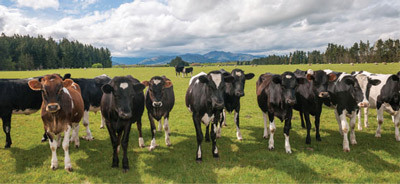California to further restrict antimicrobial use on farms
One year after federal antimicrobial use restrictions take effect on farms, California’s broader restrictions will go into effect.
A state law passed in October is similar to pending requirements from the Food and Drug Administration that will eliminate over-the-counter access to antimicrobials that are in drug classes considered important for human medicine and are administered in feed and water, as well as prohibit production-related claims such as growth promotion. Ron Phillips, vice president for legislative and public affairs for the Animal Health Institute, said the state bill, unlike the federal requirements, also will require prescriptions for injection-administered antimicrobials now available over the counter.
The AHI remained neutral on the bill, he said.
The California law also prohibits administration of antimicrobials important for human medicine to animals in “a regular pattern,” with some exceptions based on animal health.
The pending federal restrictions, based on FDA guidance documents, give pharmaceutical companies until December 2016 to make changes to drug availability and label claims. Under threat of agency action, all affected pharmaceutical companies have agreed to the changes, and the affected drugs are expected to become available only through prescriptions or veterinary feed directives throughout the U.S.
The state law takes effect in January 2018. Gov. Edmund G. Brown signed the law Oct. 10 and wrote in his signing notes that the bill addressed an urgent health problem.

“The science is clear that the overuse of antibiotics in livestock has contributed to the spread of antibiotic resistance and the undermining of decades of life-saving advances in medicine,” he wrote. “Recently, American poultry producers have shown leadership by voluntarily committing to better husbandry practices and eliminating the subtherapeutic use of antibiotics.
“This is an example that the rest of the livestock industry should follow.”
Noelle Cremers, director of natural resources and commodities for the California Farm Bureau Federation, said farmers use the over-the-counter injectibles to treat conditions such as pinkeye and bacterial respiratory infections. Despite their availability in feed stores, she said, “I think that most of our members have already established relationships with veterinarians and are used to using the prescription format.”
Cremers predicts the state law will provide challenges for farmers who work in areas with limited numbers of veterinarians, such as parts of Mendocino County and the foothills east of the Central Valley. But she stressed that medical conditions will be treated because the law includes provisions requiring that the state food and agriculture department coordinate with livestock farmers, veterinarians, and others to provide access to treatments.
The law also states that California’s Department of Food and Agriculture, Veterinary Medical Board, and State Department of Public Health will work with universities and cooperative extension services to develop antimicrobial stewardship guidelines and best management practices for veterinarians, livestock owners, and farm employees. Those documents will guide disease treatment, control, and prevention uses as well as describe alternatives to antimicrobial use, such as using vaccines, providing good hygiene, and implementing particular management practices.
Related JAVMA content:
Changes coming in antimicrobial use, availability (Jan. 1, 2015)